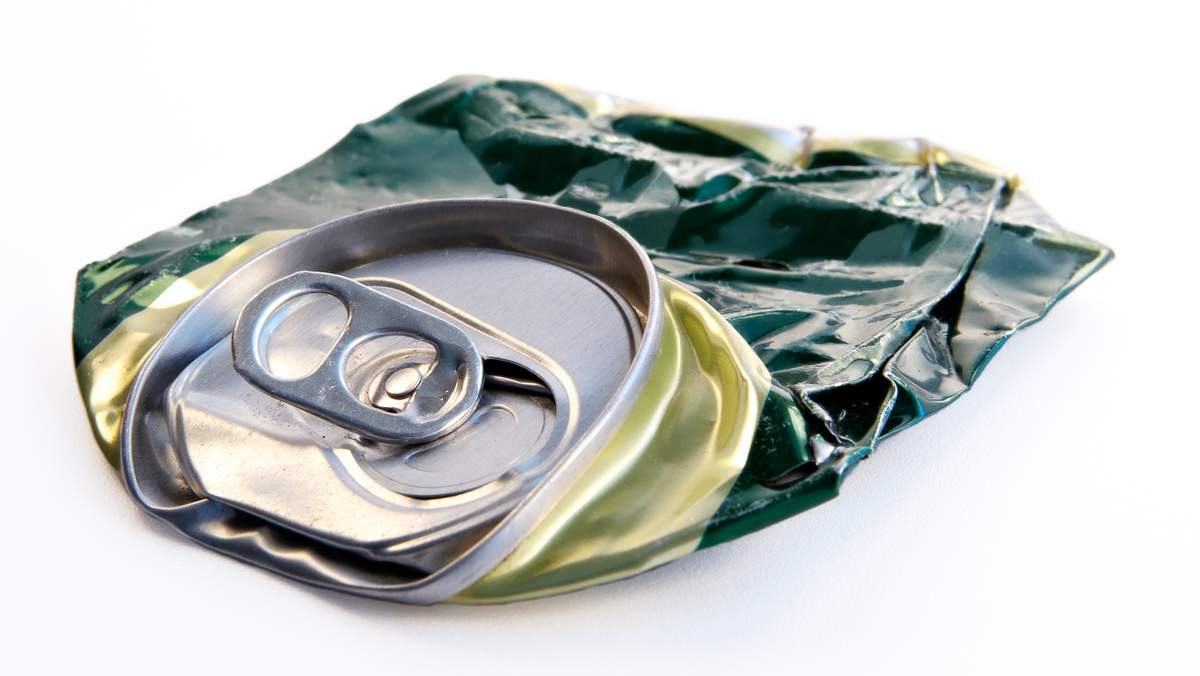
The business landscape is a rough one right now for a lot of industries. As a professional writer focused on the high-end indie beer segment, I’m a little anxious for the industry. In 2021, craft beer sales volume (craft brewer defined here) grew almost 8 percent, according to the Brewers Association, noting 2020 was that awful pandemic year when everything was closed (so that stat is maybe not the best barometer for growth). Alas, those seem like good numbers now. From Beverage Industry (a very good trade pub):
“The craft segment has been down the last two years and was down 4.8% in dollars in 2022,” says Scott Scanlon, executive vice president of BevAl Vertical at Information Resources Inc. (IRI), Chicago.
For the 52 weeks ending Jan. 1 [2023], craft beer sales totaled $4.7 billion, a 4.7% decrease, in total U.S. multi-outlets. Case sales were down 8.6% during that timeframe.
Jon Berg, vice president of Beverage Alcohol Thought Leadership at Chicago-based NielsenIQ, notes not just the beer segment’s sales decline but that it is down to a 12 [percent] share for the overall beer market.
Success is always specific to your company and regional factors are usually more important than national trends, but craft beer sales (we’re talking packaged product here vs. taproom sales) could very well continue to contract in 2023 — for a variety of factors — inflation, less beer consumption overall, fierce competition from other craft breweries, fierce competition from other beverage alcohol (spirits to ready-to-drink cocktails) and an aging out of hardcore fans (a reason the non-alcoholic segment is growing).
Another confirmation of this came this week via the National Beer Wholesalers Association‘s (NBWA) March 2023 Beer Purchaser’ Index (BPI). The NBWA is a trade association for America’s beer distributors, and the BPI is an informal monthly statistical release giving distributors a timely and reliable indicator of industry beer purchasing activity. The BPI is a forward-looking indicator for the industry to measure expected beer demand — one month forward — in the marketplace. A reading greater than 50 indicates the segment is expanding, while a reading below 50 indicates the segment is contracting. Guess what the craft BPI reading was in March 2023? 28! Only seltzer was worse.
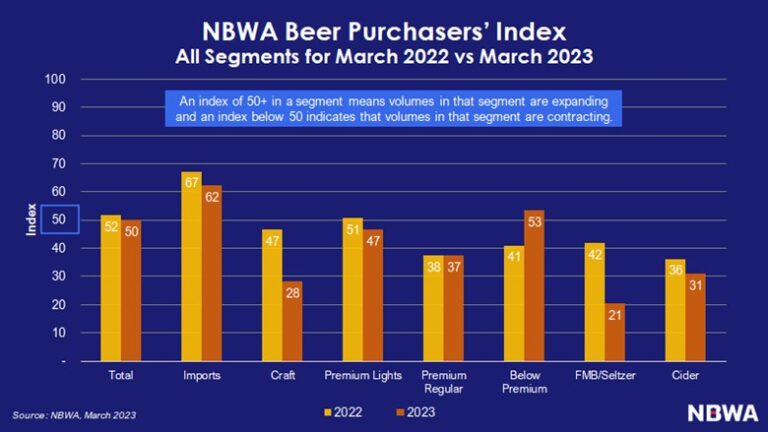
While the March BPI shows a continued shift towards a more predictable environment for the beer industry in 2023 overall, it also showed distributor demand for the craft segment is at a serious lull. While the March BPI/ARI ratio of 50/51 represents a slight regression from February’s 54/46, a fully neutral (50/50) ratio can indicate more predictable ordering and inventory levels. Following several tumultuous and unpredictable years, a stable and balanced environment is welcome news for the beer industry, but these craft numbers hit hard. Here we go
Looking across the segments for March:
- The craft index at 28 continues to signal segment contraction and is well below the March 2022 reading of 47.
- The index for imports continues to point to expanding volumes with a reading of 62, five points lower than the March 2022 reading of 67.
- The premium lights index posted a reading of 47 which is slightly lower than the March 2022 reading of 51.
- The premium regular segment index is at 37, which closely matches the March 2022 reading of 38.
- The below premium segment reading at 53 is well above the March 2022 reading of 41 and continues a trend into expanding (above 50) territory.
- The FMB/seltzer reading slide to 21 in March and which is significantly lower than the March 2022 reading of 42.
- Finally, the cider segment posted a March reading at 31 compared to 36 in March 2022.

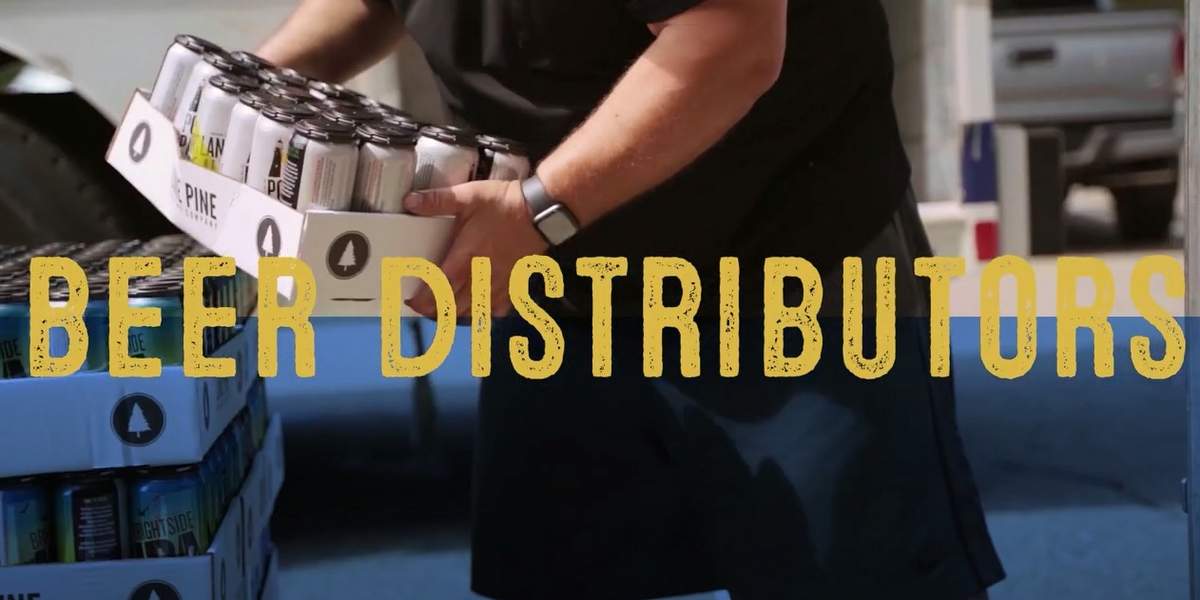
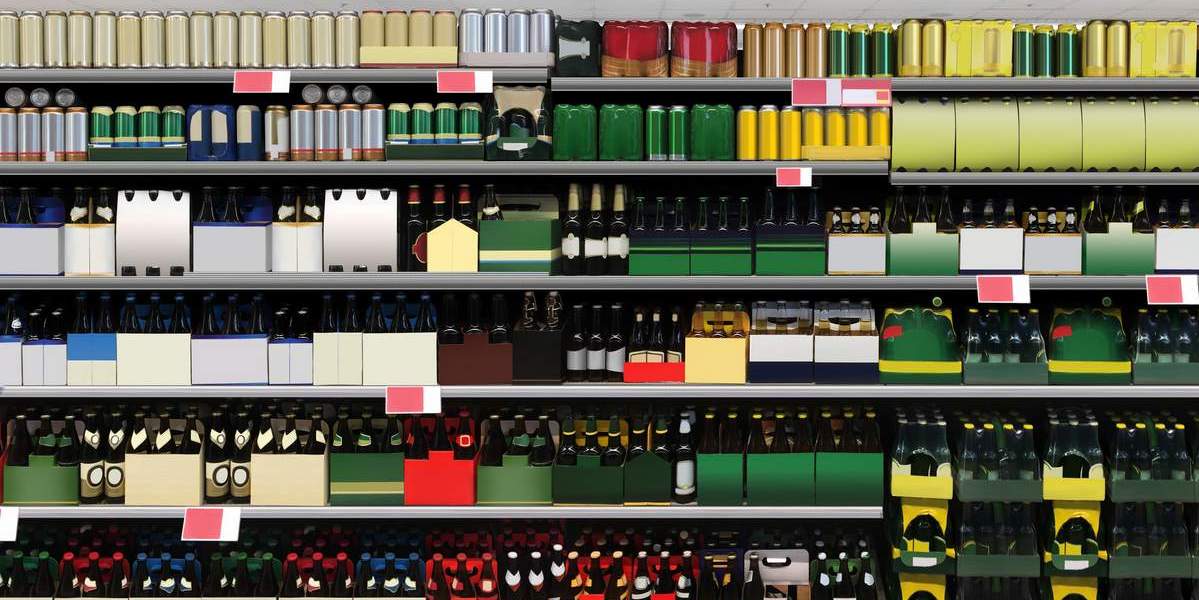
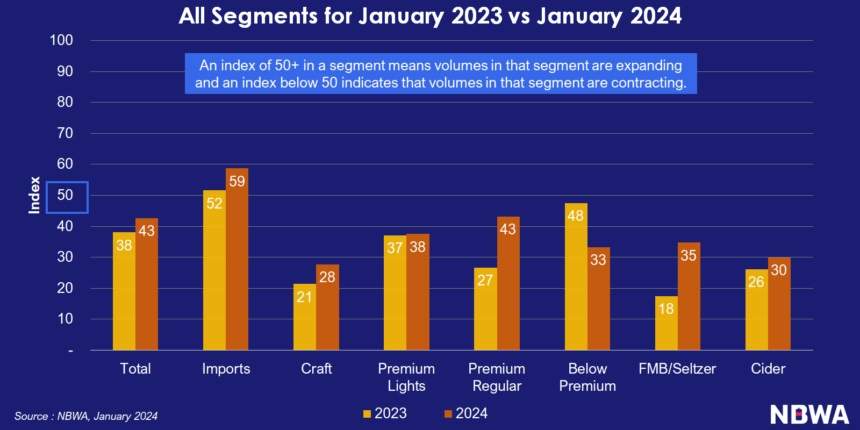
Leave a Reply
You must be logged in to post a comment.